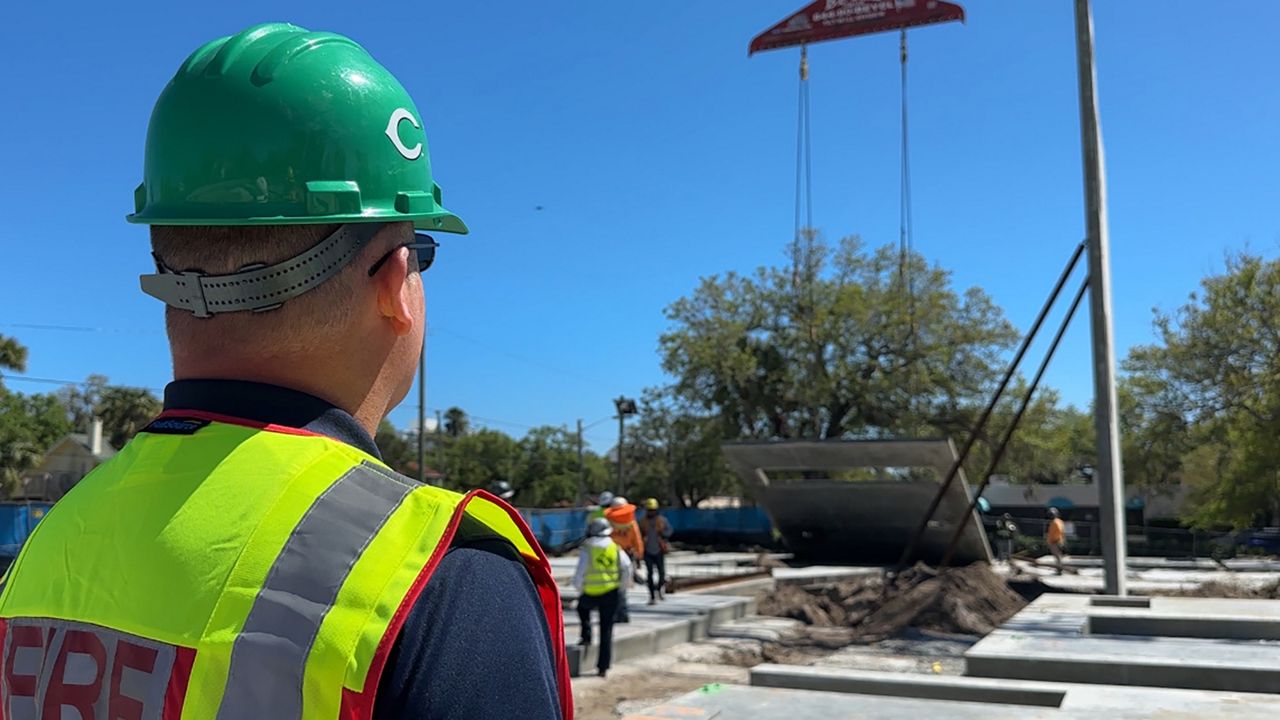DAYTONA BEACH, Fla. — The U.S. Army Corps of Engineers held two meetings Tuesday to seek input from Daytona Beach residents about flooding in the Midtown area.
The meetings are part of the Flood Risk Management Feasibility Study for the city.
The area has a decades-long history of flooding, most notably during Hurricane Ian in 2022. The U.S. Army Corps of Engineers’ flood survey area runs from Beville Road to Orange Avenue, and Nova Road to Ridgewood Avenue.
More than 8,000 people live in the area, which is surrounded by higher ground, creating a bow-shaped topography that is highly susceptible to flooding during major storm events.
Many residents say their homes have been impacted inundated by flood waters during recent hurricanes.
“The entire house was flooded inside," said Navy veteran Bob Glass. "We had about that much water and had to rip out all the plasterboard or whatever you want to call it, about that high up all the carpets were destroyed, 95% of the furniture.”
Jim LaGrone, the study’s project manager, says the goal of the study is to investigate, analyze and propose alternative mitigation responses the chronic flooding.
“We have been working to try to understand the problem," said LaGrone. "Then ultimately put some economics behind it where we could say, here's our lofty ideas. Is it economically feasible and is it environmentally feasible?”
The duration of the study will be approximately 36 months, with a final report expected to be ready by January 2027.
In addition to the two workshops Tuesday, the U.S. Army Corps of Engineers say they are working on a public website that will go live to keep the community updated throughout the study.
‘The water looked like river water’
The flood study survey area includes the Fairway Estates neighborhood where Bill Leszewski has lived for 20 years.
“We love this neighborhood,” he said. “It’s a great neighborhood. All the people are nice.”
The 600-home neighborhood is located off Beville Road. While it is known for friendly neighbors, it’s also recently gained national attention for something else — flooding. In 2022, Hurricane Ian brought more than 21 inches of rain to Daytona Beach. It left hundreds of homes in Fairway Estates flooded, including Leszewski’s.
“The water looked like river water, so we knew it was that,” he said. “There was things floating around, debris everywhere.”
Leszewski said he was up until three or four in the morning, trying to stop the water from coming into his home.
“You feel helpless,” he said. “I mean, you really do. There’s nothing you can do, and the water’s coming in and the damage is done.”
In the weeks and months following the storm, Leszewski rebuilt his home. He owns a landscape lighting and irrigation company, B&J Services of Florida, and said he rebuilt his house with flooding at the top of his mind. He added hurricane windows, raised his kitchen cabinets off the ground and waterproofed his walls with Kerdi-Board.
“It’s 100% waterproof,” he said. “You can float it in water forever and ever, and it doesn’t absorb any water. So, all my exterior walls are that now. All of them.”
Leszewski said a lot of Fairway Estates residents have storm anxiety from the flooding. He said it makes him feel better to be prepared. One way he has done so is by stockpiling supplies and food for his neighbors.
“We’re trying to get, you know, maybe five, six months of supplies,” he said. “I think what that’s going to be is mostly feeding everybody else.”
While Hurricane Ian was the worst flood event the neighborhood has seen, it wasn’t the first. In 2017, days of heavy rain brought water into Leszewski’s garage and came dangerously close to entering his home.
“If it would have rained one more day, we would have got flooded,” he said. “Not a lot of people talk about that or remember that, but that was scary.”
Leszewski said the age of the neighborhood contributes to its continued flooding, and that if it was built in the 2000s or later, the homes would be higher.
“The foundations were built too low, unfortunately,” he said. “But again, they didn’t know that there’d be this environmental impact.”
Leszewski said he’s looking forward to seeing the results of the U.S. Army Corps of Engineers’ flood survey. He hopes it will bring a solution.
“It would be awesome if they can come up with a solution to protect the neighborhood,” he said. “I mean, that would just be peace of mind for everybody.”
Leszewski said he loves his neighborhood and wants to see it protected.
Reagan Ryan is a 2023 — 2025 Report for America Corps Member, covering the environment and climate across Central Florida for Spectrum News 13. Report for America is a nonprofit national service program that places journalists in local newsrooms to report on under-covered issues.









